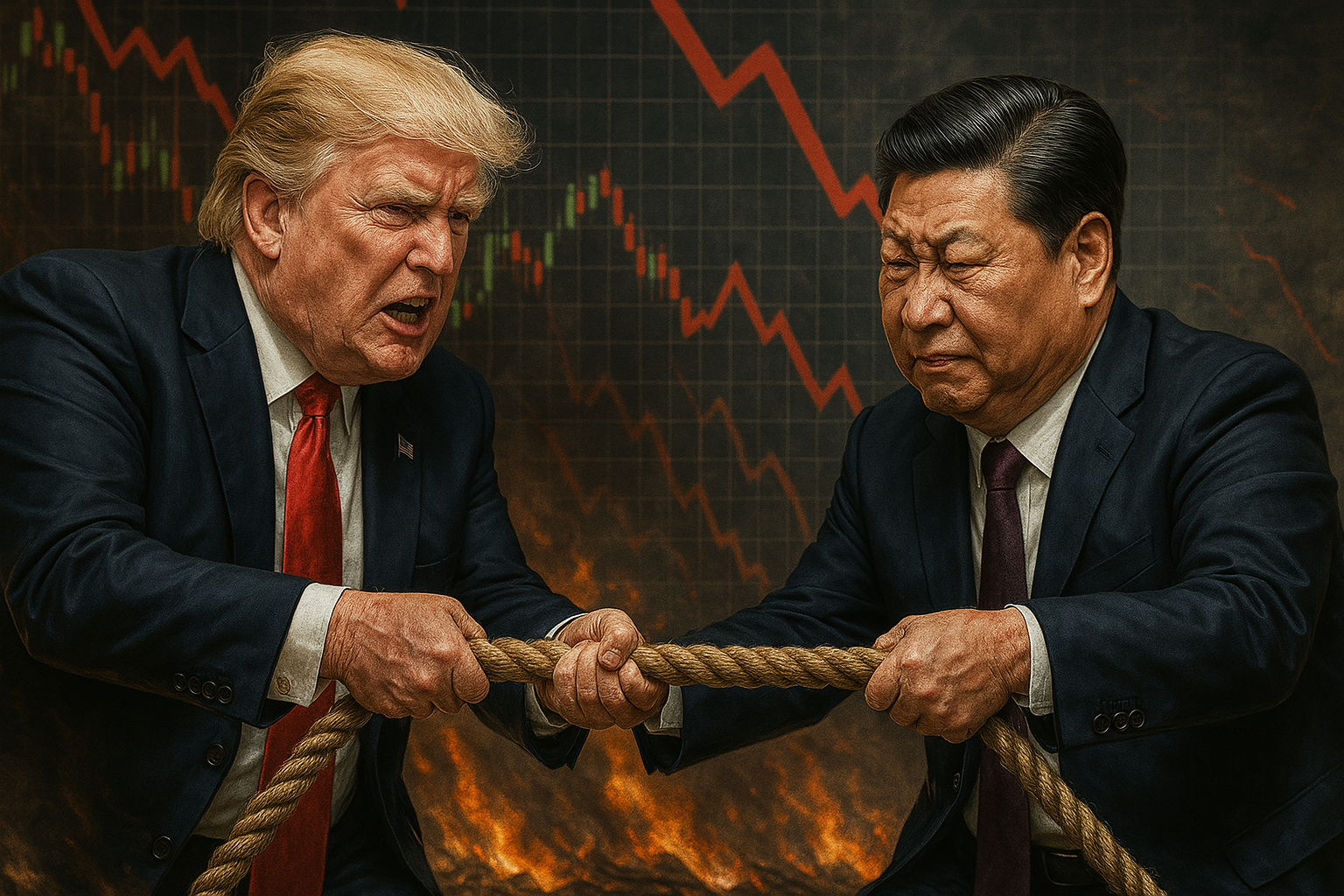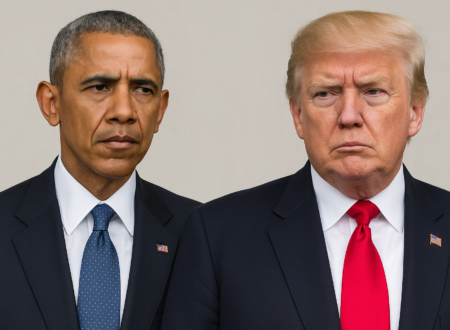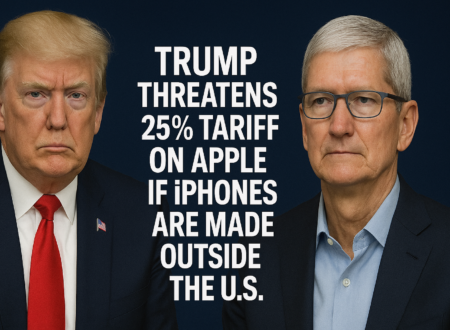Trade Tensions Reignited: The U.S.-China Conflict Escalates in 2025
Overview of the Crisis
The U.S.-China trade dispute has escalated to a critical level in early 2025, driven by unprecedented tariff hikes and retaliatory measures that threaten global economic stability. Under the Trump administration, the U.S. has intensified its trade policies, targeting China with historically high tariffs, while China has responded with significant counter-tariffs and non-tariff measures. This conflict, rooted in economic, technological, and geopolitical rivalries, is reshaping global trade networks and raising fears of a prolonged economic downturn. This report provides a meticulously researched, up-to-date analysis of the trade war, incorporating the latest tariff statistics, economic impacts, and potential future scenarios as of April 17, 2025.
Current Tariff Levels
As of April 17, 2025, the U.S. imposes an effective tariff rate of 245% on Chinese imports, following an executive order on April 15, 2025, that raised tariffs from 145% to 245% on a wide range of goods, including electronics, textiles, and industrial machinery (Reuters). This rate comprises a 225% base tariff and a 20% additional duty tied to China’s alleged role in the fentanyl supply chain (CNBC). China has retaliated by increasing its tariffs on U.S. goods to 125%, effective April 12, 2025, up from 84%, targeting agricultural products, energy, and manufactured goods (Chinese Ministry of Finance).
| Country | Tariff Rate | Effective Date | Components |
|---|---|---|---|
| U.S. on China | 245% | April 15, 2025 | 225% (executive order) + 20% (fentanyl-related) |
| China on U.S. | 125% | April 12, 2025 | Increased from 84% |
These tariffs represent a significant escalation from earlier 2025 levels, when U.S. tariffs on Chinese goods were 54% on April 2 (Wikipedia).
Retaliatory Measures and Official Stances
China has adopted a resolute position, with the Ministry of Finance stating, “China will not bow to U.S. tariff coercion and is prepared to endure economic challenges to defend its sovereignty and interests” (Reuters). Beijing has rejected negotiations under current conditions, emphasizing its ability to withstand prolonged economic pressure. The U.S., under President Trump, is pursuing “reciprocal” trade terms to address a $419 billion trade deficit with China (2024 data, U.S. Census Bureau). While the administration paused new tariff hikes on other countries for 90 days on April 11, 2025, it has intensified measures against China (New York Times). White House spokesperson Karoline Leavitt indicated potential openness to dialogue on April 11, stating, “President Trump is ready to negotiate a fair deal, but China must show willingness to compromise” (New York Times).
Technological Rivalry and Non-Tariff Measures
The trade war extends beyond tariffs, with technological supremacy as a central battleground. The U.S. has expanded restrictions on China’s access to advanced semiconductors, AI components, and quantum computing technologies, blacklisting over 200 Chinese firms, including semiconductor manufacturers (Wikipedia). China has countered by advancing its domestic tech ecosystem, with Huawei’s HarmonyOS capturing 30% of the Chinese smartphone market and AI models like DeepSeek offering competitive performance at lower costs (Politico).
China’s non-tariff measures include antitrust investigations into U.S. tech giants like Google, NVIDIA, and Apple, the inclusion of American firms such as PVH and Illumina on its “Unreliable Entity List,” and threats to restrict exports of rare earth minerals, critical for electronics and renewable energy technologies. Additionally, China has imposed bureaucratic barriers on U.S. agricultural and energy exports, affecting $20 billion in annual trade, including beef, poultry, and liquefied natural gas (Politico).
Economic and Market Impacts
The 245% U.S. tariff and China’s 125% counter-tariffs have unleashed severe volatility in global financial markets. Asian markets, particularly Hong Kong’s Hang Seng, plummeted 8.2% in the week ending April 15, while U.S. and European indices saw declines of 5-7%, evoking comparisons to early 2020 market crashes (New York Times). U.S. consumer confidence dropped to a 14-month low in April 2025, with inflation expectations rising to 5.4%, according to the University of Michigan (New York Times).
Global businesses are reeling, with India’s Tata Consultancy Services reporting a 15% decline in U.S. client spending due to tariff uncertainty (New York Times). The International Monetary Fund estimates that the trade war could reduce global GDP growth by 0.4% in 2025, with a 0.3% contraction in global merchandise trade (Wikipedia). BlackRock CEO Laurence D. Fink warned on April 12, 2025, that “the U.S. economy is on the brink of recession, with tariffs exacerbating inflationary pressures” (New York Times). JP Morgan now projects a 65% probability of a global recession by Q4 2025 (Reuters).
| Market/Indicator | Impact | Source |
|---|---|---|
| Hang Seng Index | -8.2% (week ending April 15) | New York Times |
| U.S. Consumer Confidence | 14-month low, inflation at 5.4% | New York Times |
| Global Recession Risk | 65% probability by Q4 2025 | Reuters |
Global Trade Disruptions
The U.S.-China trade war is reverberating across global trade networks. The African Growth and Opportunity Act (AGOA), which supports $10 billion in annual exports from Southern Africa, faces potential disruption, threatening industries like automotive and textiles (NPR). The European Union is contemplating retaliatory tariffs on U.S. digital and pharmaceutical companies if U.S. policies further destabilize global trade (NPR). China is actively courting allies, securing trade agreements with Brazil and India to offset U.S. pressure (Reuters). Mexico has made progress in negotiations to exempt its steel, aluminum, and auto exports from U.S. tariffs, with Economy Minister Marcelo Ebrard reporting “constructive talks” with U.S. Commerce Secretary Howard Lutnick on April 14, 2025 (New York Times).
Potential Scenarios for the Future
The U.S.-China trade conflict could evolve along several trajectories, each with distinct implications:
- Escalation: Further tariff increases could reduce U.S.-China trade by up to 60% by mid-2026, severely impacting technology, manufacturing, and consumer goods sectors. This could trigger a broader global trade war, with other nations imposing retaliatory tariffs (ABC News).
- De-escalation: Diplomatic efforts could lead to a partial tariff reduction, though this is unlikely in the near term given both nations’ entrenched positions. A breakthrough would require significant concessions, such as China addressing intellectual property concerns or the U.S. easing tech restrictions (New York Times).
- Supply Chain Diversification: Companies are accelerating efforts to relocate production to Vietnam, India, and Mexico, with Vietnam’s exports to the U.S. rising 20% in Q1 2025. However, this shift introduces higher costs and logistical challenges (Bloomberg).
- Economic Consequences: The 245% tariffs are projected to increase U.S. consumer prices for electronics and clothing by 25-35%, fueling inflation and reducing purchasing power. A global recession is increasingly likely, with emerging markets particularly vulnerable (Reuters).
- Geopolitical Tensions: Prolonged trade hostilities could undermine cooperation on critical issues like climate change and global health, potentially escalating into diplomatic or military frictions (Responsible Statecraft).
- WTO and International Law: Both nations may face challenges at the World Trade Organization, but the WTO’s limited enforcement power could lead to protracted disputes, further eroding multilateral trade frameworks (Wikipedia).
Expert Insights and Economic Analysis
Economists warn of severe consequences from the trade war. The International Monetary Fund projects a 0.4% reduction in global GDP growth in 2025, with trade volumes declining by 0.3% (Wikipedia). MIT professor Yasheng Huang described the conflict as a “test of endurance,” noting that China’s cultural willingness to “eat bitterness” and its control over critical supply chains give it significant leverage (ABC News). The U.S. has exempted certain consumer goods, such as smartphones and laptops, from the 245% tariff, signaling potential domestic political pressures (Politico). Conversely, China’s rare earth mineral export restrictions could disrupt $500 billion in global supply chains, particularly for electric vehicles and wind turbines (Atlantic Council).
Path Forward and Implications
The U.S.-China trade war, marked by a 245% U.S. tariff on Chinese goods and a 125% Chinese counter-tariff, is a defining challenge for the global economy in 2025. Its economic, technological, and geopolitical ramifications threaten to reshape trade networks, destabilize markets, and hinder international cooperation. While diplomatic resolutions remain possible, the current trajectory points to a prolonged and costly standoff. Policymakers, businesses, and consumers worldwide must brace for continued uncertainty, with strategic adaptation and dialogue critical to mitigating further escalation.





